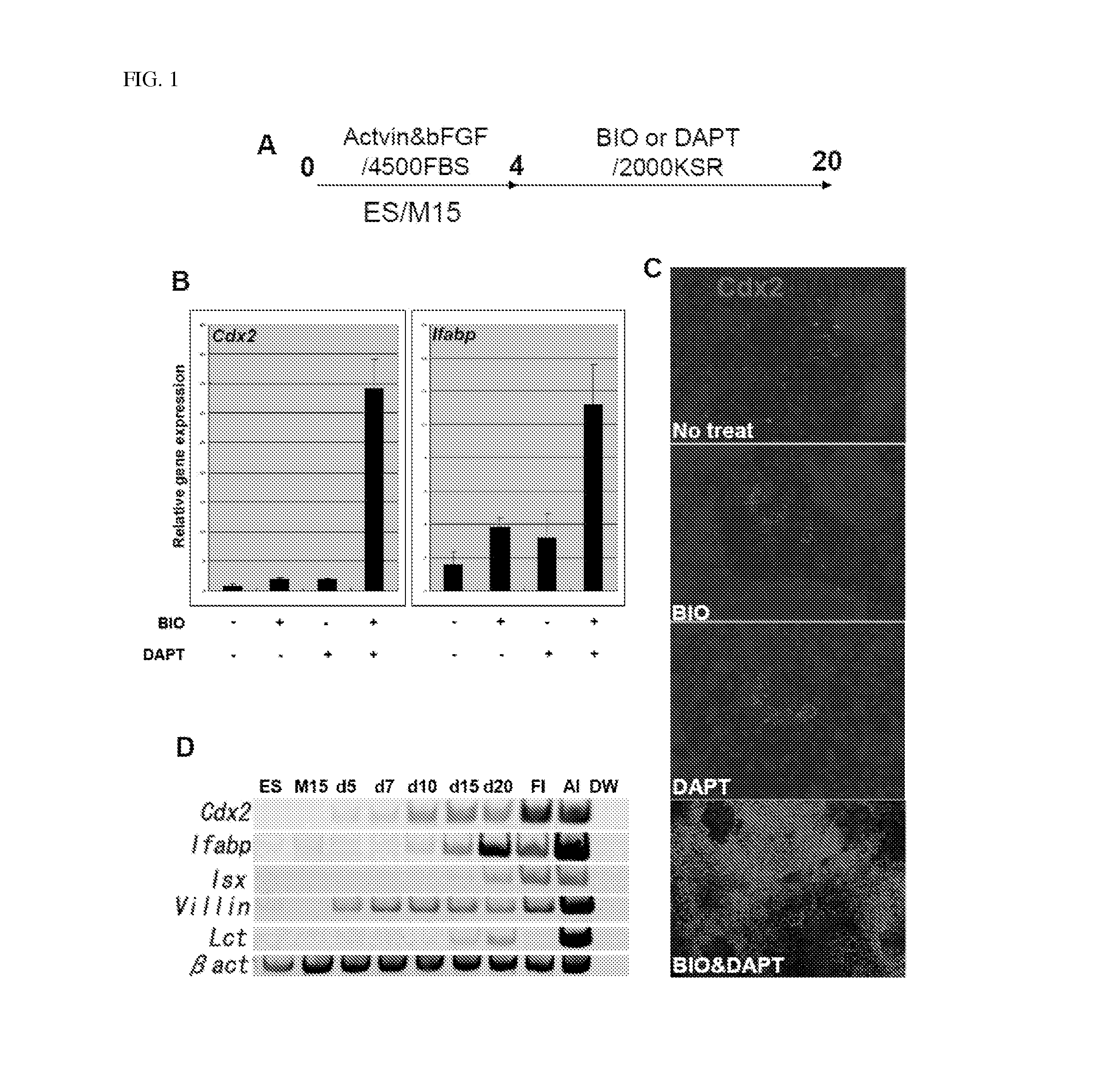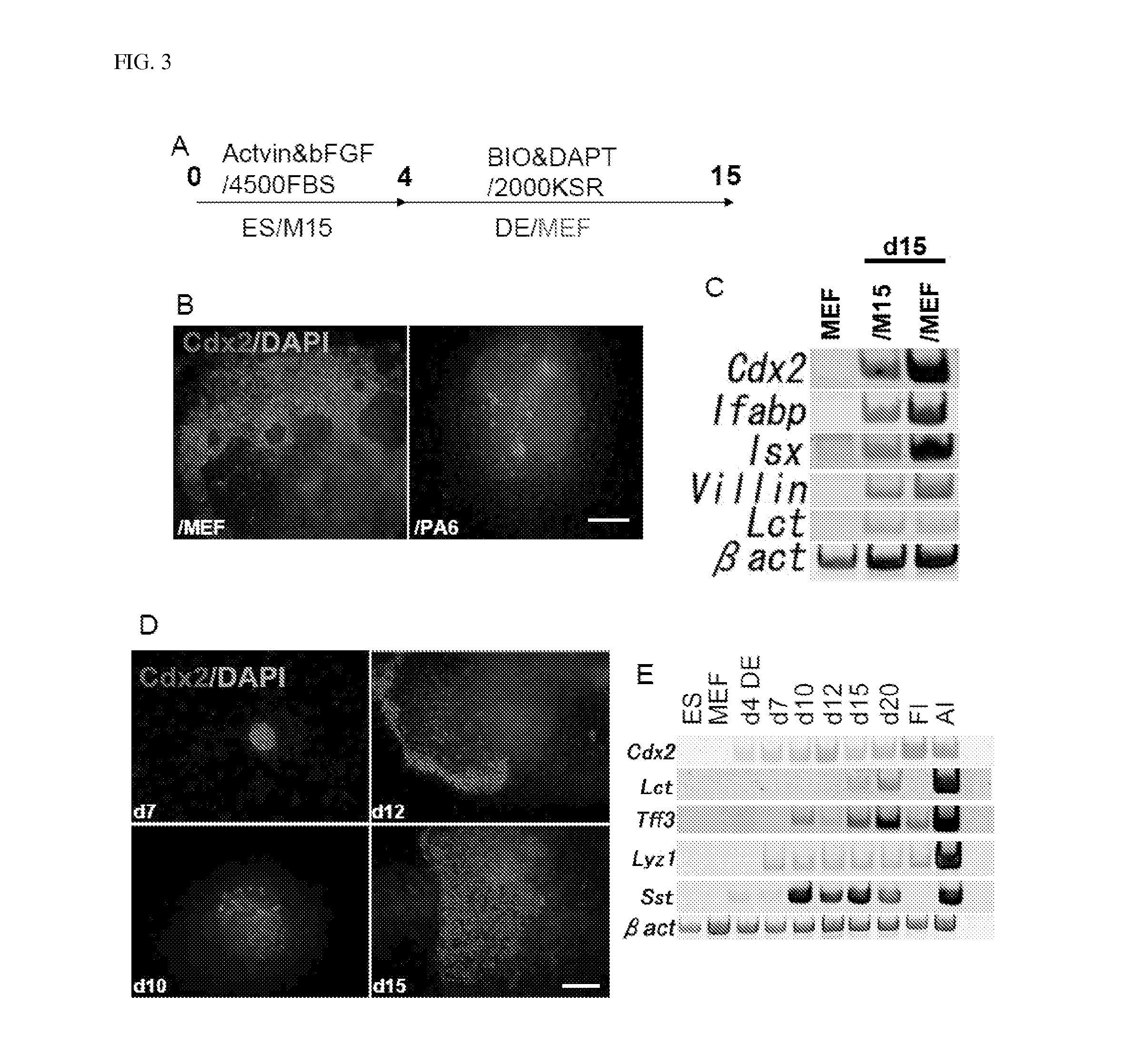Method for producing intestinal cells
a technology of intestinal cells and cells, which is applied in the field of producing intestinal cells, can solve the problems of difficult to produce various types of more mature intestinal cells massively and effectively by using these conventional arts, and the method of discovery cannot efficiently differentiate the cells into various mature intestinal cells
- Summary
- Abstract
- Description
- Claims
- Application Information
AI Technical Summary
Benefits of technology
Problems solved by technology
Method used
Image
Examples
example 1
(A) Materials and Methods
(1) Cell Lines
[0065]In this example, a cell line R1 was used as mouse ES cells. The cell line R1 was maintained on mouse embryonic fibroblast (MEF) feeders in 2000 mg / L-glucose-containing DMEM supplemented with Leukemia Inhibitory Factor (LIF), 10% fetal bovine serum (FBS), 100 μM of non-essential amino acids (NEAA), 2 mM of L-Gln, 50 units / mL of penicillin and 50 μg / mL of streptomycin (PS), and 100 μM β-mercaptoethanol.
[0066]The MEF was isolated from a mouse embryo of embryonic day (E) 12.5-14.5.
[0067]The mesonephric cell line M15 was those provided by Dr. T. Noce (Keio University) and Dr. M. Rassoulzadegan (University of Nice-Sophia Antipolis, Antipolis, France). The R1 ES cells were those provided by Dr. Andras Nagy. The MEF and M15 cells were treated with mitomycin C (Sigma), and were used as previously reported (Shiraki, N., Higuchi, Y., Harada, S., Umeda, K., Isagawa, T., Aburatani, H., Kume, K. and Kume, S. (2009). Differentiation and characterization...
example 2
[0094]Example 2 shows cases in which inhibitors or activators against various signal transduction systems were further added besides BIO and DAPT in the method of the present invention.
PUM
| Property | Measurement | Unit |
|---|---|---|
| concentration | aaaaa | aaaaa |
| concentration | aaaaa | aaaaa |
| concentration | aaaaa | aaaaa |
Abstract
Description
Claims
Application Information
 Login to View More
Login to View More - R&D
- Intellectual Property
- Life Sciences
- Materials
- Tech Scout
- Unparalleled Data Quality
- Higher Quality Content
- 60% Fewer Hallucinations
Browse by: Latest US Patents, China's latest patents, Technical Efficacy Thesaurus, Application Domain, Technology Topic, Popular Technical Reports.
© 2025 PatSnap. All rights reserved.Legal|Privacy policy|Modern Slavery Act Transparency Statement|Sitemap|About US| Contact US: help@patsnap.com



